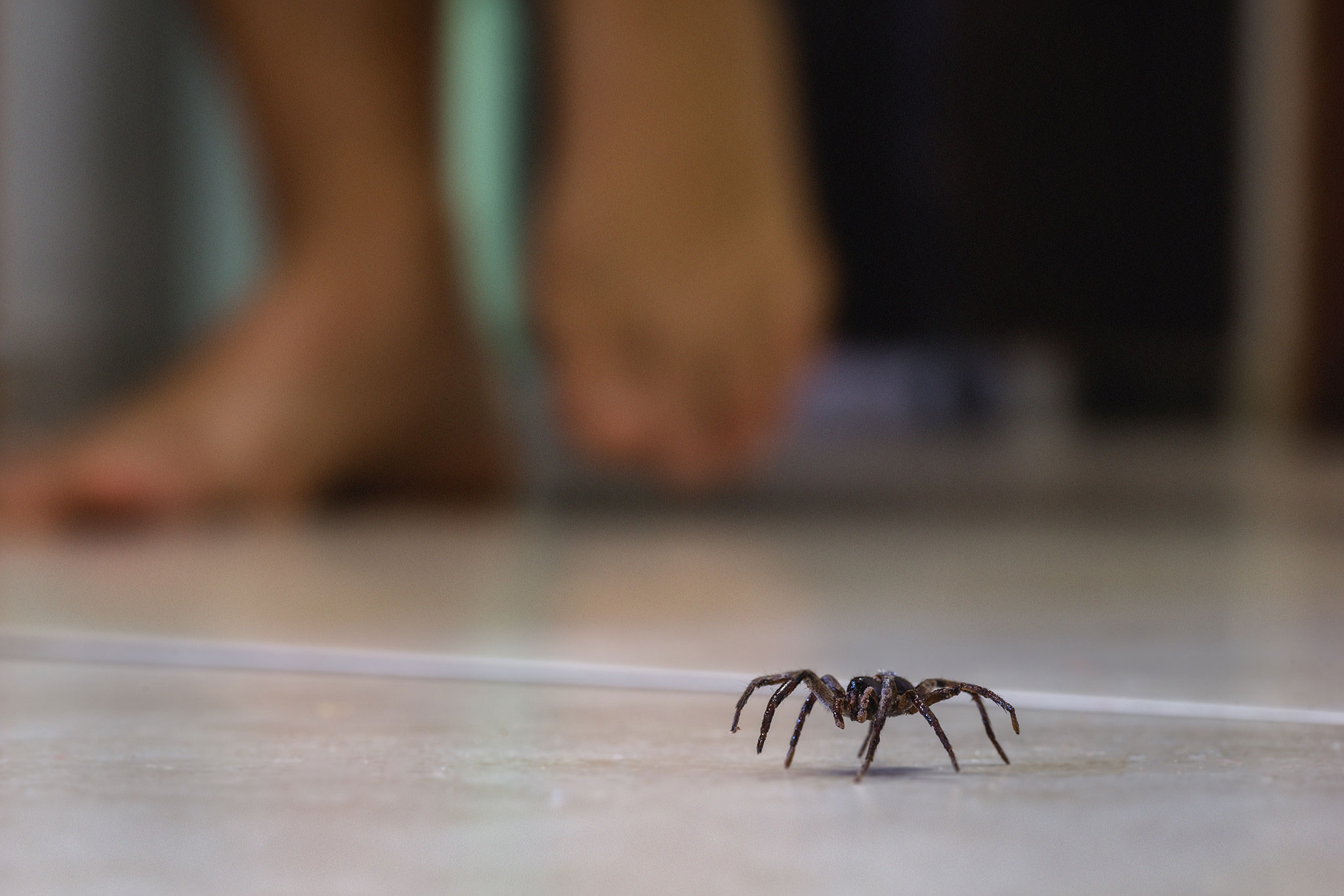What are the most dangerous spiders in Texas?
The four species (not two!) you need to watch out for—
- The Most Dangerous Spider in Texas: Black Widow
- The Copycat: Brown Widow AKA Grey Widow
- The Runner-Up: Brown Recluse AKA Fiddle Back AKA Violin Spider
- The Underdog: Black-Footed/American Yellow Sac Spider
How to Identify Dangerous Spiders in Texas
Black Widow
The female black widow is one of the most easily recognized dangerous spiders in Texas, which is good for Texans because she’s the most venomous spider we have. She’s shiny and solid black, except for a bright red hourglass on her abdomen, and ranges in size from one-quarter inch to three-eighths of an inch.
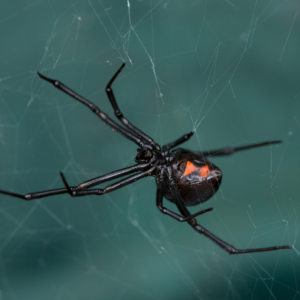
The male is smaller, roughly half the size, and has brown and black legs that are longer than the females. The male also has a red marking on its abdomen similar to an hourglass, which is usually accompanied by white specs. Male black widows also have bristles on their legs that help them quickly wrap prey in silk. Both sexes have eight eyes in two rows of four.
Brown Widow
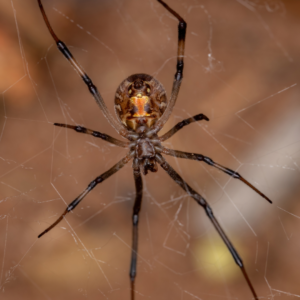
Female brown widows are much the same size and shape as their black counterparts, but they’re a light brown throughout the body with an underbelly hourglass that’s more orange than red. Females can vary dramatically in color to match their habitat. Males are, again, about half the size and have an orange design on the underbelly that may look like one or two spots. For both males and females, the legs are light brown with dark joints.
Brown Recluse
Males and females of this species are about the same size, ranging from a quarter-inch to .375”. They’re brown with a yellow or grey undertone, long legs, and usually a darker head.
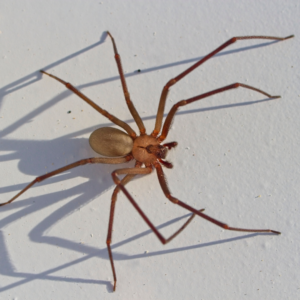
You can distinguish a brown recluse from other species by its violin-shaped design on the abdomen. It might also be helpful to note that brown recluse spiders do not have dark joints. The legs should be a uniform color throughout. Their eyes are also distinctive, sitting in three pairs of two on the center, left, and right of the face.
Yellow Sac Spider
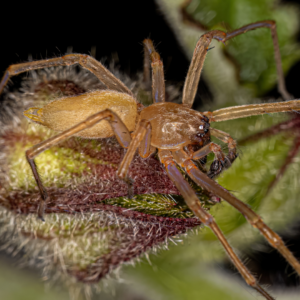
This easily overlooked species is a pale yellow-beige color with darker areas around the jaws, feet, and palps (the little face-arms). It also may or may not have a darker stripe along the top of the abdomen. The front legs are the longest for this species. They are about a quarter-inch long, and males and females generally look the same. The female might be a bit plumper. They have eight eyes, all about the same size, in two horizontal rows.
Where do you find dangerous spiders in Texas?
Black Widow
In Texas, this species is everywhere. They are everywhere in the United States. They are a hardy species that can survive in most North American climates. Like most venomous spiders, they prefer dark and dry locations with clutter, like closets and under furniture or even inside the shoes you left outside for a few days.
Brown Widow
She’s not native to Texas, but she lives here now. She probably started in Africa or South America. Today, she can be found worldwide, throughout the southern half of the US, and throughout Texas, displacing the more venomous black widows as they fight for dark and dry corners in your barns, garages, and porches.
Brown Recluse
The reclusive nature is part of what makes this breed so dangerous. They love to live indoors, and they’re notorious for their ability to hide in nooks and crannies and the folds of your linens, hence the name “recluse.” They’re also harder to identify than black widows because their design is brown-on-brown, and you have to get relatively close to see it.
Yellow Sac Spider
You can find yellow sac spiders outside on foliage, but only if you’re looking for them. They are nocturnal insects and only come out to eat and mate. You can occasionally find them in houses and other buildings.
What happens if venomous spiders in Texas bite you?
Black Widow
The black widow’s venom is fifteen times more venomous than a rattlesnake’s. Luckily, they’re not aggressive and only bite when they feel they have to. Most spiders, including the black widow, would rather run away than fight a human.
The venom attacks the nervous system, causing pain, nausea, difficulty breathing, stiffness, weakness, itching, sweating, and swelling. Reactions vary and range from mild to severe. The reaction can be fatal. Seek medical attention immediately if a black widow bites you.
Brown Widow
Brown widows are dangerous because they are venomous, and you never know what your reaction will be. However, they are less venomous than black widows and are even shyer, making it unlikely that they’ll bite you.
If you are bitten, your symptoms might include high blood pressure, seizures, weakness, nausea, sweating, severe pain, and stiffness that might look like appendicitis. If you think you’ve been bitten, seek medical attention.
Brown Recluse
Like the others, the recluse will only bite if provoked. However, since they live in your ducts, beds, and walls, this happens more often than with the others. The bite doesn’t cause any pain, so you probably won’t know about it until you start to react.
The reaction can include lesions, nausea, fever, slow-healing wounds, necrosis, infection, and excruciating pain. The necrosis (irreversible flesh-rotting) caused by the brown recluse bite is another reason they’re often considered more dangerous than the widows.
Yellow Sac Spiders in Texas
The American yellow sac spider bite causes pain at the time of the bite and itching and swelling soon after. Symptoms can last seven to ten days. Again, the good news is that they do not like our taste and prefer not to bite. The reaction from a yellow sac spider bite is not as bad as a brown recluse or widow bite, and it does not typically cause necrosis.
855Bugs pest control in Waco and Temple Texas can help identify areas around your home that might be ideal for widow spiders to live; make recommendations; and provide regular service treatments that provide peace of mind. Schedule a free inspection today!

